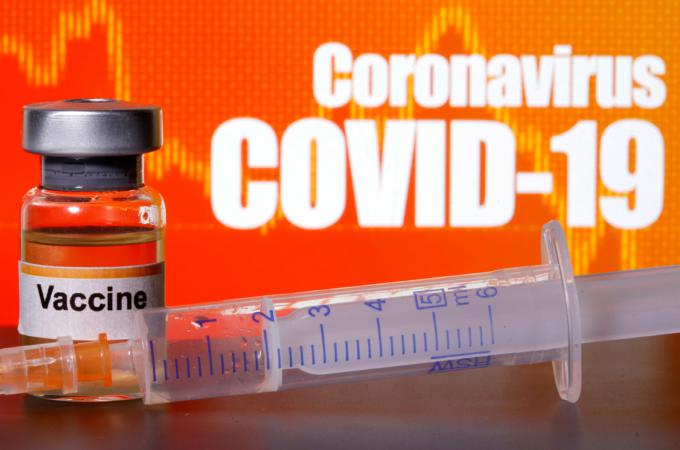COVID-19 vaccine myths
Several popular myths about COVID-19 vaccines have been gaining traction on social media in recent months, particularly in regard to messenger RNA (mRNA) vaccines being developed by Moderna, Sanofi, Pfizer, and a handful of other companies. I would like to consider five of these myths.
Myth 1: For vaccines that rely on injecting patients with mRNA, the possible incorporation of these genes into our genetic makeup will fundamentally alter who we are as humans, moving us into a project of transhumanism, the production of a "Human 2.0," etc.
Reply: Any incorporation of new genes into our chromosomes from a COVID-19 mRNA vaccine would be an exceedingly rare occurrence, if it were to occur at all. It is actually very difficult to get the genetic information of mRNA to integrate into our chromosomes, partly because this would mean a reverse directional flow of the so-called "central dogma of molecular biology": our DNA or chromosomes are read ("transcribed") to produce mRNA, which is then read ("translated") to make proteins. Even if the accidental and unintentional incorporation of an mRNA message into our chromosomes were somehow to occur following vaccination, this would not mean that we were creating "Human 2.0," since those genetic changes would not be expected to affect our sex cells, and therefore would not be transmitted to the next generation. Vaccinating people with an mRNA vaccine for COVID-19, therefore, does not imply that we are "remaking man" or heading down the path of transhumanism.
Myth 2: The rapid pace of clinical trials means that vaccines will be unsafe and/or ineffective.
Reply: This could be a legitimate concern, if proper testing were to be curtailed, or approval for public vaccination campaigns were to be granted ahead of conclusive safety and efficacy testing. Such approval, however, appears highly unlikely when it comes to any of the major national regulatory agencies like the U.S. Food and Drug Administration, the European Medicines Agency, or Australia's Therapeutic Goods Administration (with the possible exception of regulatory agencies in China and/or Russia).
Myth 3: Luciferase is the name of the bioluminescent enzyme contained in the vaccine, which seems connected to the "forces of evil."
Reply: Luciferase, an enzyme involved in firefly illumination, is being used in various testing and development stages ahead of the production of a COVID-19 vaccine, but is not itself part of the injected material included in human vaccinations. Luciferase is a commonly used biomedical research tool, and has been used, for example, in lab animals to study the most effective way to deliver mRNA vaccines, whether by an injection into the skin, muscle, or a vein.
Myth 4: Vaccine manufacturers have no legal repercussions for any bad effects from their vaccines.
Reply: Dr. John Grabenstein, retired global executive director of medical affairs for Merck Vaccines, offers the following corrective: "Manufacturers are indemnified for unforeseeable adverse events. They are not indemnified for negligence. This is standard practice." With pharmaceutical companies getting ready to immunize hundreds of millions of people, the question of who will cover claims for damages in case of unanticipated future side effects is quite important. Ruud Dobber, a member of the senior executive team at the pharmaceutical giant AstraZeneca, recently argued: "This is a unique situation where we as a company simply cannot take the risk if in ... four years the vaccine is showing side effects ... In the contracts we have in place, we are asking for indemnification. For most countries, it is acceptable to take that risk on their shoulders because it is in their national interest." In the USA, for example, a 2005 law, known as the Public Readiness and Emergency Preparedness, or PREP Act, provides immunity from liability, apart from any willful misconduct, for products like vaccines that are developed to address a public-health emergency.
Myth 5: Using hydrogel nanotechnology to deliver an mRNA vaccine means there will be "big brother" monitoring and the introduction of microchips into the human body.
Reply: No microchips are present in vaccines. Hydrogel nanotechnology refers to the "lipid nanoparticles," which encase the mRNA. This is a glorified way of saying "very small oil droplet." Lipids are what our cell membranes are composed of, so when the mRNA vaccine is injected, the lipid of the vaccine particle merges with the lipid of the cell (like two oil droplets merging) and the piece of mRNA is delivered to the inside of the cell ("transfection"). These "lipid nanoparticles" could theoretically be misused to deliver other controversial substances into the body like microchips, but this does not mean they should not be used for valid purposes, like delivering life-saving mRNA vaccines during a pandemic.
Debunking these various myths does not mean that there aren't still questions and concerns about proposed COVID-19 vaccines. But we shouldn't argue against vaccines in ways that make neither ethical nor scientific sense.
- Father Tadeusz Pacholczyk, Ph.D. earned his doctorate in neuroscience from Yale and did post-doctoral work at Harvard. He is a priest of the diocese of Fall River and serves as the Director of Education at The National Catholic Bioethics Center in Philadelphia,



















